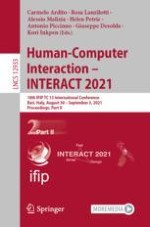1 Introduction
2 Related Work
2.1 Stressors in Virtual Reality Training of Police First Responders
2.2 Interaction Design for Virtual Training Experiences
2.3 Co-creation
3 The Problem Context: The SHOTPROS Project
3.1 Used Methods for Developing the Stress Cue Concept
3.2 The Stress Cue Concept
Stressor | Description |
|---|---|
Weapon (knife/gun) | The trainee looks into a room/vehicle and sees a knife/gun and a hand holding it |
Crowd (approx. 30 people) | The trainee stands in front of a crowd of people (multiple crowd behaviors possible) |
Unexpected weapons | An unknown person stands in the room and uses an ashtray or vase as a weapon |
Aggressive dog | A dog barks and runs at the trainee |
Blood | There are traces of blood in a room |
Darkness | A closed room (or street) with no or very little light |
Injured people | Showing people seriously injured |
Loud unexplained noise | A door is banged shut after trainee walked inside the room./ In a closed room, the TV is running and producing loud sudden sounds |
Scream | Screams are audible while the trainee is inside a closed room/or outside (e.g., on the street) |
Unknown origin of smoke | Closed room gets filled with smoke |
